Vacheron Constantin has been making watches continuously for 260 years, and the Geneva-based manufacture has never been shy about not only acknowledging its long history, but also paying tribute to it with modern timepieces that are almost note-for-note reissues of their historical forebears — no matter how out-of-touch with prevailing trends those original pieces may seem to many. These watches — among them the Art Deco-infused Historiques American 1921, which we review here — comprise Vacheron’s Historiques collection, and they have gained an avid following among today’s watch enthusiasts and collectors.
Recently, I had the opportunity to spend a few days with the latest vintage-inspired watch from the Historiques series, the Vacheron Constantin Historiques Cornes de Vache 1955, introduced a year ago at SIHH 2015. A beautiful piece with a unique look and a notable in-house movement, it nevertheless may have been a bit overshadowed at the time by the coverage of the brand’s headliner that year, the new Harmony collection. To remedy that oversight, let’s now take a close look at the Historiques Cornes de Vache 1955, a watch with a definite old-school elegance but also a distinct 21st-century appeal. (Photos by Rob Velasquez.)

We begin by addressing the first question a non-French speaker might ask: “Cornes de Vache” translates as “horns of a cow” — a reference to the case’s most notable design flourish, its distinctively curving lugs (a style we refer to these days most often as “teardrop-shaped”), which the designers of this watch’s mid-20th-century inspiration thought resembled a bovine’s horns. That watch, issued in 1955, was Reference 6087, powered by hand-wound Caliber 492 and ensconced in an 18k yellow gold case measuring a then-contemporary 35 mm in diameter. It claims legendary status among Vacheron’s chronograph watches due to its being the first water-resistant and antimagnetic chrono that the brand ever produced, with the movement protected inside a soft-iron inner cage.

The round case, in a sleekly polished 950 platinum, is not quite period-perfect (fortunately, in my view), with a slightly larger diameter of 38.5 mm — still small compared to many men’s watches these days, especially chronographs, but definitely not undersized. It features the same piston-style (“mushroom-style” in Vacheron’s parlance) chronograph pushers as the original, and a grooved crown with a relief engraving of Vacheron’s well-known Maltese Cross logo. The crown is, admittedly, a bit hard to grasp for any but the thinnest of fingers, sandwiched as it is between the two chrono pushers, but this is a necessary consequence: smaller case diameter means elements must be pushed closer together.

As for the chronograph itself, a light touch activates the start-stop pusher at 2 o’clock, with a pleasantly tinny click, which sends the central counter hand gliding around the dial. Another light press of the reset pusher at 4 o’clock sends it snapping back to its zero position. Vacheron’s design team stayed true to the original watch’s bi-compax dial layout — with chronograph minutes (up to 30) tallied on the subdial at 3 o’clock and running seconds on the subdial at 9 o’clock — but also took the opportunity that the slightly larger case provides to err on the side of greater legibility, “airing out” the dial layout a bit. In a nice bit of subtle symmetry, both chronograph hands (central seconds and 30-minute subdial counter) are in blued steel. Nearly invisible to the naked eye, but visible under a loupe, is a classical snailed pattern on both subdials. The tachymeter scale on the dial’s periphery — another reproduced element from the 1955 model — features a royal blue color that matches the chrono hands.


The central hour and minute hands are made of white gold, and legibility in reading the time can be an issue on occasion, as these hands are somewhat similar in size (the hour hand is only slightly shorter), the contrast with the silvered, opaline dial is not great, and in low light or at a quick glance it is possible to mistake the central chrono hand for the minute hand because of their relative thinness. Again, however, it appears faithfulness to the vintage original piece was the main deciding factor in these aesthetic choices, which most of this watch’s target fan base will surely appreciate. Applied white-gold hour markers and Roman numerals add an appropriate touch of elegance.
The movement at the heart of the Historiques Cornes de Vache, visible through the exhibition sapphire caseback (a contemporary feature that even the most faithfully executed vintage re-editions tend to include these days and one that, again, is for the most part appreciated by aficionados), is Vacheron Constantin’s manufacture Caliber 1142. Composed of 164 pieces (21 jewels) and measuring 27.5 mm in diameter and 5.6 mm thick, the movement features manual winding and a fully-wound power reserve of approximately 48 hours. According to my Lepsi watch scope, the Historiques Cornes de Vache has a rate differential of 3.8 seconds per day, a beat error of just 0.7 milliseconds, and a mean amplitude of 300º.


The chronograph function is particularly fun to observe from the back of the watch, as you see the mechanisms click into place and a glimpse of the column wheel, whose screw is graced with the Maltese cross. While I’ve always appreciated the convenience of an automatic watch, I’ve always found manual-wind movements such as this one, at least in general, to be the more beautiful type, with their great, labyrinthine inner workings unobstructed by a large winding rotor. This one, like all of Vacheron’s in-house movements, bears the prestigious Hallmark of Geneva, which means there’s a whole lot of high horology finishes and flourishes for an aficionado to appreciate as he peers through a loupe, including polished chamfers and sinks for jewel holes, polished jewel heads, côtes de Genève on the plate and bridges, chamfered wheels on the going train. Interestingly enough, Caliber 1142 is used in only one other Vacheron chronograph watch, the Harmony Chronograph Small Model for ladies. Of course, the vintage-style Cornes de Vache case makes it an ideal home for this relatively petite movement (27.5 mm diameter, 5.57 mm thick).


The Maltese Cross motif makes another appearance on the beautifully rendered, polished platinum clasp, which snugly secures the watch to the wrist. (Incidentally, it occurred to me in the course of my review of this timepiece that Vacheron Constantin is one of the few watch brands that announces its presence to an fellow horophile even if the first thing he sees is the buckle.) The dark blue alligator strap — definitely a nod to modern tastes — was surely not as common in 1955, but it definitely works well here. The smooth, elegantly curving cowhorn lugs make for a very nice wrist feel, and at this relatively small diameter, the platinum case never feels heavy and at the same time fits nicely under a shirt cuff — not that you won’t want it to peek out every once in a while. On the contrary, you will most likely want to show this timepiece off until — you should pardon the expression — the cows come home.

The Vacheron Constantin Historiques Cornes de Vache 1955 carries a retail price of $69,200 and is being issued in what the company refers to as “a highly exclusive production run.”

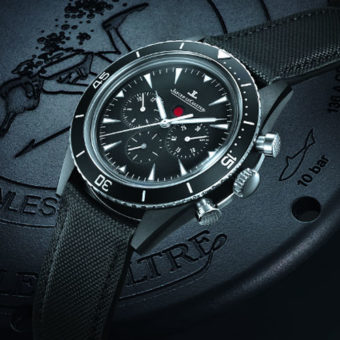
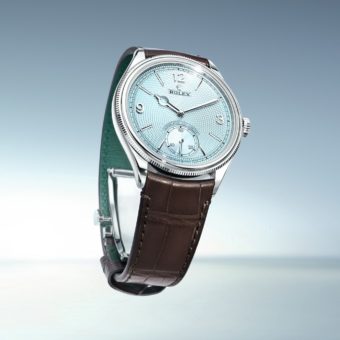
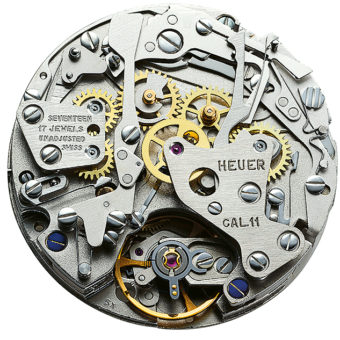
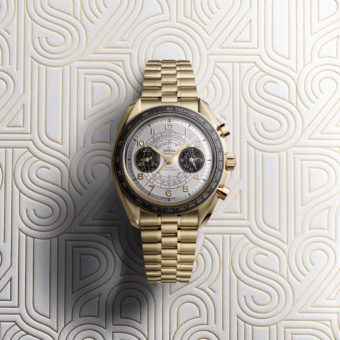
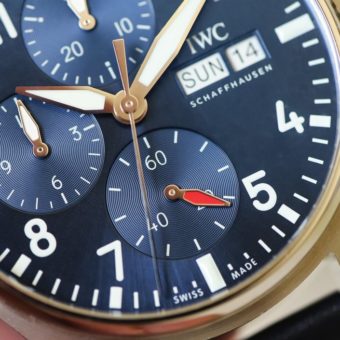
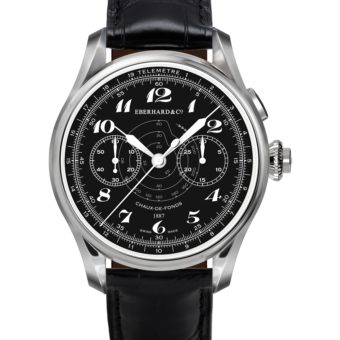
Hello…Thank you for the oportunity to establish a point of contact with you…I would love to received a issue of the magazine. ..